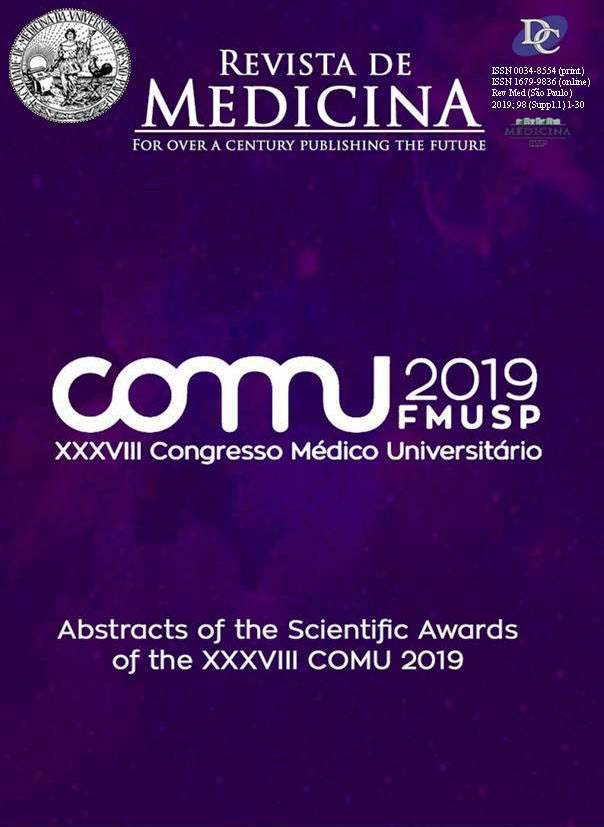Nitric oxide in patients with chronic chagas disease
DOI:
https://doi.org/10.11606/issn.1679-9836.v98iSupplp7-7Palavras-chave:
Nitric oxide, Chagas disease, Cardiopathy, Tripanosoma cruziResumo
Among the main causes of death around the world, we can highlight those caused by cardiovascular diseases, which have been growing significantly. The knowledge of the pathophysiology of cardiovascular diseases evidences the involvement of inflammatory processes, acute or chronic, with action of pro-inflammatory and vasoactive factors. One of these factors is nitric oxide (NO), a potent vasodilator that acts on the physiological regulation of vascular tone and has its serum levels altered in the presence of cardiovascular event, representing a physiological compensatory mechanism, to be included in Chagas disease.
Method: Peripheral blood samples from 2 patients (men, mean age 65 years) with positive Chagas; disease serology (cardiac form, chronic phase) were collected at the cardiology outpatient service of the Hospital Electro Bonini (UNAERP). Two healthy volunteer participants were used as a negative control. NO (NO 2- / NO 3-) levels were determined by a quantitative detection kit for nitrate and nitrite concentrations using colorimetric assay. Absorbance was read at 540 nm.
Partial Results: The median NO activity was 1.4 umol/L in chagasic patients and 1.0 umol/L in healthy participants (p <0.001).
Discussion and conclusion of the results: The cardiac form of Chagas Disease, a condition caused by the chronic infection of the protozoan Trypanossoma cruzi and marked by chronic inflammation and progressive myocardial cell damage, has progressed with new endemic areas throughout the world, although its incidence has decreased last years. The parasite compromises the energetic synthesis of cardiac myocytes without altering the mitochondrial ultrastructure. It is reported that the parasite can control the central structure of the organelle in order to obtain substrate for its proliferation. Therefore, it has become relevant to investigate the relationship of serum NO concentration with cardiovascular diseases, due to the importance of vasoactive factor and the subject for public health. Developing knowledge that allows better understanding of oxidative stress in the presence of T. cruzi infection and associating them with inflammatory mechanisms culminates in the elucidation of this chronic pathology.
Downloads
Downloads
Publicado
Edição
Seção
Licença
Copyright (c) 2019 Revista de Medicina

Este trabalho está licenciado sob uma licença Creative Commons Attribution-ShareAlike 4.0 International License.




